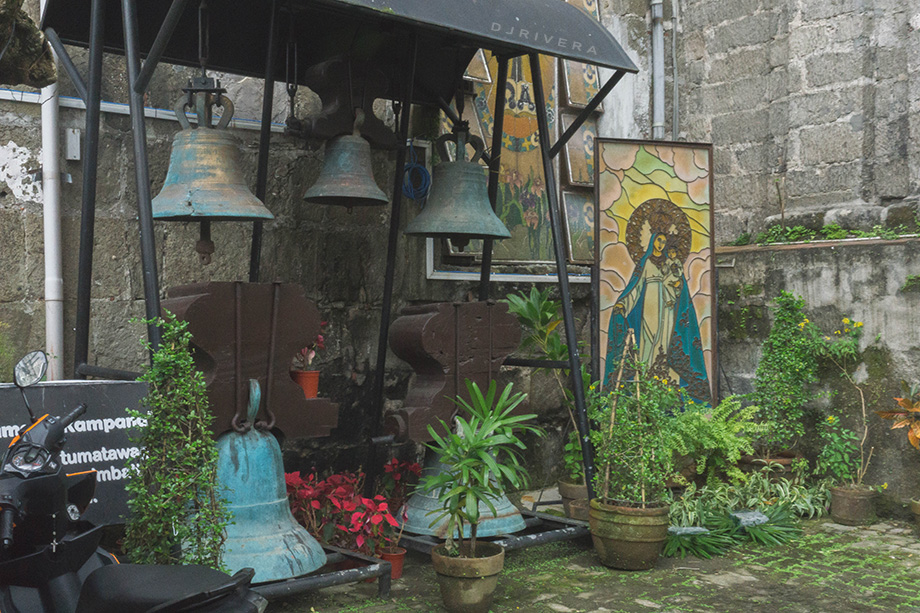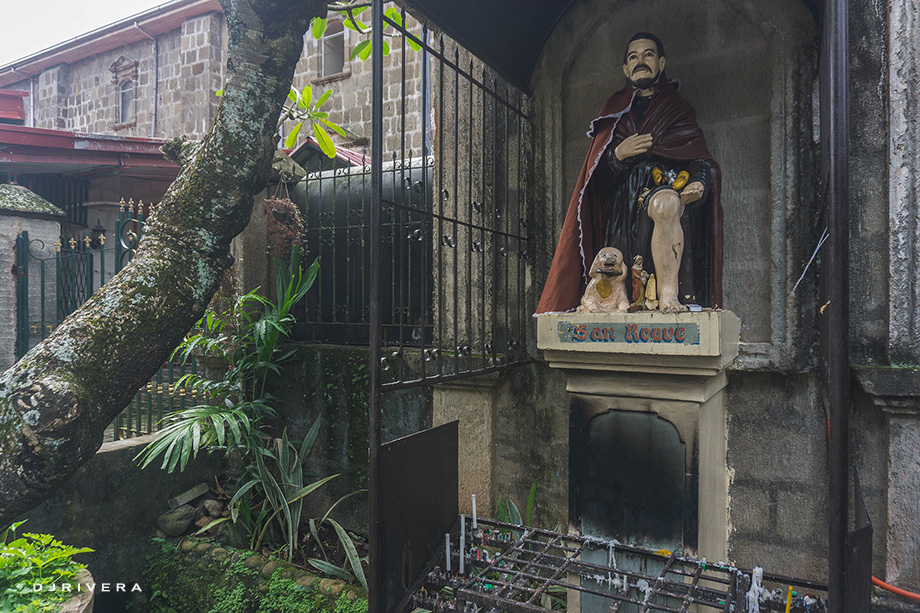While most Catholics have their newly purchased vehicles blessed in Antipolo Cathedral or in Manaoag Church, I brought mine at the National Shrine of San Antonio de Padua in Pila, Laguna simply because I was bound for the town. Isinabay ko na sa break-in, so to speak.
Pila was one of those destinations in Laguna that I'd been meaning to visit for long because of the charming, old-school ambiance of the colonial era houses concentrated at the heart of the town's poblacion, like the heritage villages of Vigan and Taal.
Pila was also ideal for the break in and benediction because it's not so near from our home as Antipolo (I need some mileage), but not so far as Pangasinan—I find it tedious to secure necessary documents and coordination required for traveling far during this pandemic.
We cruised the rest of Rizal and towns of eastern Laguna; stopped over at some of the centuries-old churches along the way (sort of a mini visita iglesia) before reaching the quaint, historical town of Pila after lunchtime.
Pila Church History
Many Spanish era churches around the country have a history of getting transferred from their original sites because of getting ravaged by natural disasters. Pila Church is one of those.
The original church, made of hardwood and bamboo, was inaugurated in 1581 in today's Brgy. Pagalangan of the neighboring Victoria town when Pagalangan was part of Pila. Dedicated to San Antonio de Padua, Pila Church is the oldest Catholic church in the Philippines named after the patron saint for the recovery of anything lost—lost items, lost people, lost souls among others—and for people looking for healing.
In 1599 through 1617, a much sturdier stone church was erected. But the consistent flooding in Pagalangan forced the transfer of the town center to the present site before the turn of 19th century. It was said that the townspeople, aimed to retain the church design, came together, moved and rebuilt the church brick by brick. Pila Church of today was completed in 1816; the design was retained but was said to be smaller than the first stone church.
In May 2000, the then National Historical Institute declared Pila's town center, including the church complex, as a historical site. In May 2002, St. Anthony de Padua Church was elevated to a "diocesan shrine" status, then to a national shrine in 2019. Pila Church became Laguna's first national shrine.
Pila Church Inside and Out
The church façade, dominated by columns and balusters lining the cornices, was divided into three levels. The pediment has a niched image of St. Anthony; the second level has three stained glass windows, and in the lower level, niched statues of Sacred Heart and Immaculate Heart flank the main door. An engraved seal of the Franciscan Order forms as a keystone to the arched doorway.
On the left side of the church stands the three-tier, square based octagonal belfry; distinctive as it was made of red bricks unlike the rest of the church.
Adjacent the church was Liceo de Pila, built some decades later after the completion of the present church. It served as a convent for many years before it was converted into a school in the 1940s. Before "Liceo de Pila", the school was named St. Anthony Academy, in honor of the Portuguese saint.
The shrine houses three first class relics, i.e. physical remains, of St. Anthony—a part of his rib cage, a part of his foot, and an unidentified piece of his body. These relics are enshrined behind the tabernacle. Locals and pilgrims get a glimpse of the relics during the veneration set every Tuesday, the day of the shrine's devotion to San Antonio de Padua.
Church Bells of Pila
At the frontage, the church's historical marker was mounted. Beside it was a small, fenced plot that displays the two oldest surviving church bells that graced Pila's bell tower.
The larger bell bears the inscription San Antonio de Pila. Cast in 1681, it was said to be the fourth oldest surviving church bell in the country. This bell survived the rampaging British invaders in 1762 when Pileños of that era submerged it in the nearby Laguna Lake.
The smaller bell (not shown in photo above) has the inscription S. Clara Orapronobis Ano 1796. Apparently, "1796" was the year the bell was cast and "S. Clara orapronobis" could be a prayer to Sta. Clara; the town center was seated in Barangay Sta. Clara, orapronobis is "pray for us" in Latin.
Apart from these two ancient bells, there are other five bells on display at the garden accessible through the church's side entrance. These were the bells that once resonated across town in the past decades.
Pila's Patron Saints
At the side gate, there's an image of San Roque (St. Roch) with a rack where believers light up votive candles and whisper their prayers. Sometimes, devotees leave tangible offerings such as fruits at the image. Behind it is the corner for lighting a candle for St. Anthony.
San Roque was the town's secondary tutelary saint. History recounts that Pila's patronage to San Roque started in 1700s during the wake of social crises of that period.
The town celebrates the feast day of St. Anthony on June 13, San Roque on August 16, and the shrine's anniversary on April 23.
Pila offers a bring-back-the-time trip for its 19th century church, the important historical pieces housed within, and the Spanish and American era houses scattered around the town center. But with Pila Church becoming a national shrine and a major pilgrimage destination, for our Catholic brothers, the town is both a time-travel and a faith-enriching trip in one.
How to Get to Pila Church, Laguna
Address: 82 Burzagom St., Pila, Laguna
Drive: https://waze.com/ul/hwdw2cxnv7 (using Waze app)
Commute: Take a bus bound for Sta. Cruz, Laguna at the terminals in Alabang, Cubao or Buendia. Also, buses are available along EDSA. Tell the driver/conductor to get you off at Pila town center. Going back to Manila, you can wait for a bus from where you alighted or ask a tricycle to take you to the main highway.
Contact(s):
- Landline: (049) 559-5078
- National Shrine of San Antonio de Padua, Pila, Laguna, Philippines (Facebook page)
References:
- Lagarde, Roy. (2019, April 23). Laguna’s San Antonio de Padua Church now a ‘national shrine’. Retrieved from https://cbcpnews.net/cbcpnews/lagunas-san-antonio-de-padua-church-now-a-national-shrine/
- National Historical Commission of the Philippines. (2000). Resolution No. 2, s. 2000 Declaring the Town Center of Pila in Laguna as a National Historical Landmark [PDF]. Retrieved from https://web.archive.org/web/20141018155937/http://nhcp.gov.ph/files/NHI_res_2_2000.pdf
- Santiago, Luciano P.R. (2007, April 25). The Shrine of San Antonio de Padua in Pila, Laguna. Retrieved from https://web.archive.org/web/20160314023944/http://blog.bayangpinagpala.org/2007/04/shrine-of-san-antonio-de-padua-in-pila.html













